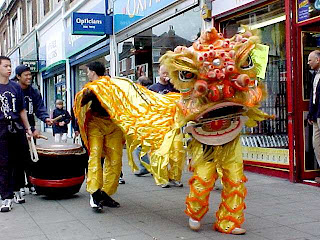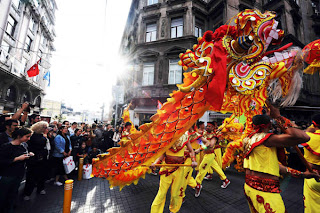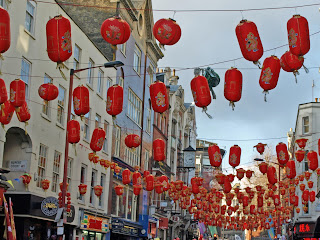Dragons play a relatively significant part in the Chinese culture
for kids. However, not everyone knows of their importance. For example,
Chinese dragons represent good luck. It is also part of the New Year
celebrations. However, do you know why they are part of the Chinese New
Year?
The dragon taking part in the New Xear celebration dates back to ancient times. Unlike how they are viewed now, these creatures did not breathe fire. Instead, they were caring and wise during ancient Chinese times. In addition, during those times, dragons were the protectors of rivers, rain, precious gems, and metals, which makes this part of Chinese culture for kids' fun and entertaining because they can see just how different each culture views dragons. Kids are also able to see their transformation over the centuries
In Japan, Korea, and China, the dragon is a major symbol within many different paintings. You probably have seen many Asian paintings of the various kinds of dragons, but didn't know of or possibly even notice what sets them apart from each other. However, if you look close enough, you are able to point out the difference between the different creatures from amongst all three countries relatively easily:
• All Chinese dragons have five toes
• All Japanese dragons have four toes
• All Korean dragons have three toes
The Chinese legend of the dragon:
"The farther dragons travel from their home in
China, the more toes they lose! Fortunately,
When wandering dragons return home to China,
All their missing toes grow back. But, as most
Dragons would prefer to keep all their toes, all
The time, few dragons ever wander very far
From home."
One of the 12 animals in the Chinese Zodiac is the dragon. You are very lucky if are born in the year of the dragon. The reason why people are lucky is that these people are tactless, potentially great, and passionate leaders (although they can be arrogant at times as well).
Dragons have been extremely important throughout Chinese history. People of all classes are born with the same dragon-like traits, including emperors. Emperor Huang Di and Emperor Yan Di (brothers) wdre a couple of the Emperors that were born under the sign of the dragon.
You will find dragons as part of the Chinese culture for kids spanning centuries worth of history for kids to learn, especially when you view the dragon's importance to their New Year's celebrations and National day celebrations.
The dragon taking part in the New Xear celebration dates back to ancient times. Unlike how they are viewed now, these creatures did not breathe fire. Instead, they were caring and wise during ancient Chinese times. In addition, during those times, dragons were the protectors of rivers, rain, precious gems, and metals, which makes this part of Chinese culture for kids' fun and entertaining because they can see just how different each culture views dragons. Kids are also able to see their transformation over the centuries
In Japan, Korea, and China, the dragon is a major symbol within many different paintings. You probably have seen many Asian paintings of the various kinds of dragons, but didn't know of or possibly even notice what sets them apart from each other. However, if you look close enough, you are able to point out the difference between the different creatures from amongst all three countries relatively easily:
• All Chinese dragons have five toes
• All Japanese dragons have four toes
• All Korean dragons have three toes
The Chinese legend of the dragon:
"The farther dragons travel from their home in
China, the more toes they lose! Fortunately,
When wandering dragons return home to China,
All their missing toes grow back. But, as most
Dragons would prefer to keep all their toes, all
The time, few dragons ever wander very far
From home."
One of the 12 animals in the Chinese Zodiac is the dragon. You are very lucky if are born in the year of the dragon. The reason why people are lucky is that these people are tactless, potentially great, and passionate leaders (although they can be arrogant at times as well).
Dragons have been extremely important throughout Chinese history. People of all classes are born with the same dragon-like traits, including emperors. Emperor Huang Di and Emperor Yan Di (brothers) wdre a couple of the Emperors that were born under the sign of the dragon.
You will find dragons as part of the Chinese culture for kids spanning centuries worth of history for kids to learn, especially when you view the dragon's importance to their New Year's celebrations and National day celebrations.
Dragons have been part of the Chinese culture for kids and adults
for thousands of years. These magnificent creatures appear in
everything, from art work to Chinese zodiac signs and practically
everything in between. The SpeakMandarin blog contains a great deal of information regarding the dragon within the Chinese Zodic, so make sure you check it out soon.

















.JPG)









